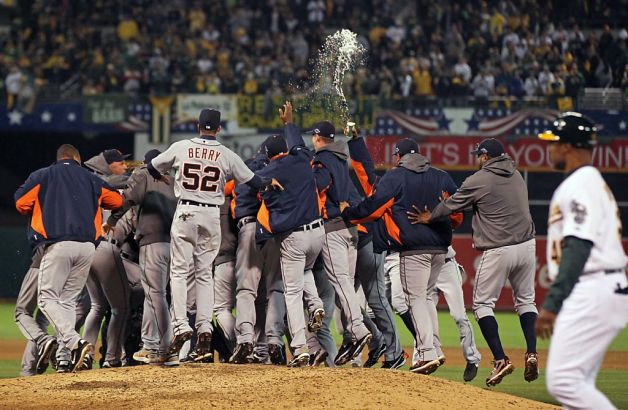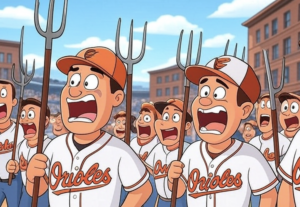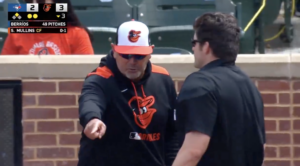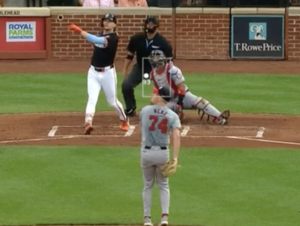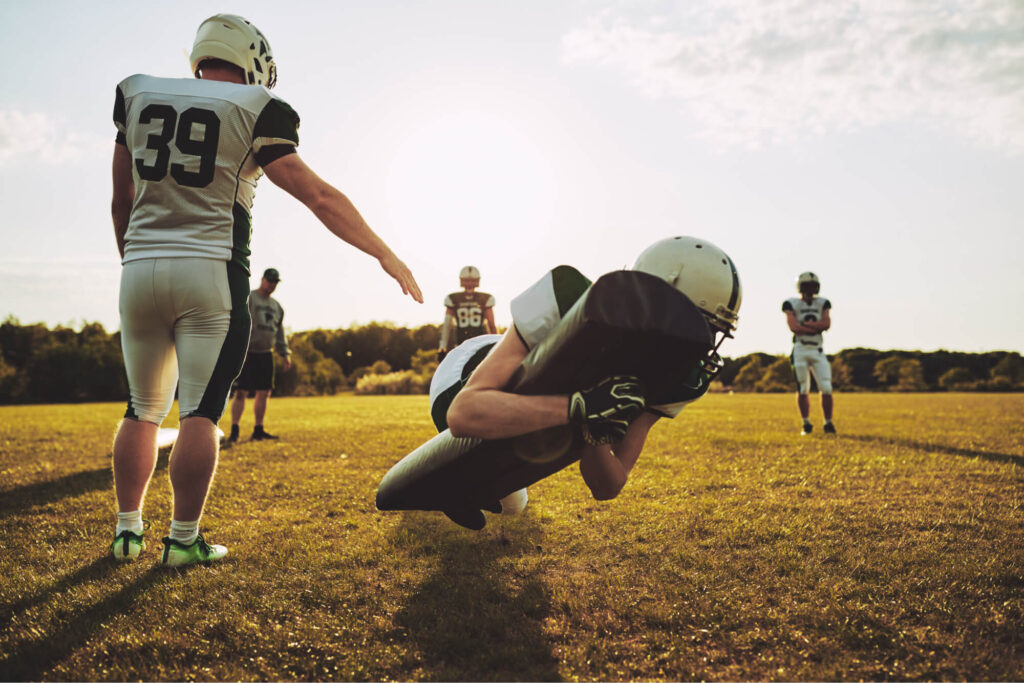BALTIMORE—The Detroit Tigers win, and win a lot. In their recent road sweep of the Orioles, the Tigers won two games convincingly, and one on a blown save, but it is the intricacies of how the Tigers did it that is simply fascinating. The Tigers win, put simply, through science.
I spoke with Tigers’ Performance Director Dr. George Carlo about the team’s performance protocols, and the differences are nothing short of startling from what other teams do. The Tigers manage, effectively, nearly every aspect of a player’s day, from diet to sleep, and the results are telling.
From being last year’s AL World Series representative, to a Triple Crown and an MVP for Miguel Cabrera two years ago, to having two Cy Young Award-winners on their staff, the current AL Central-leading Tigers do a lot right.
Dr. Carlo pulled out an app on his phone that showed me exactly what he was talking about. The app showed hourly when Tiger players were to eat, and what. In certain blocks during the day, players were to eat “chewable” food, but after about 6pm, the food was to be “non-chewable.”
The idea of eating multiple meals a day and eating protein-rich food is nothing new to health-conscious individuals and athletic trainers, but what is new is just how carefully Tigers’ staff monitor this.
An illustrative point was when I told Carlo I wanted to head up to the press cafeteria at Camden Yards to grab a hot dog, a staple comfort food for media members in the late innings. Carlo looked at me like I had two heads and I quickly backed off the idea, settling for “less bad” popcorn instead – a “non-chewable” smoothie would have been preferable at 9pm however.
The app – intellectual property of the Tigers – shows not only type of food and the hours when players should eat, but also hours when they are likely to be at their highest performance capacity.
The hours varied – some were two hour blocks in the morning, some in the evening, and appeared to vary based on a number of factors.
Players are asked to take a multiple question test upon joining the team which resembles the SATs. The exam, like the SATs, seems to have answers that aren’t right or wrong. Questions ask, for example, what a player would do in the situation where they are given the chance to hang out with friends or prepare for the following day’s work.
A player would need to pick which he would do – but the answers are not always what one might think. The test is not designed to get right or wrong answers, per se, but rather to determine where a player’s head is.
The Tigers look for, according to Carlo, “adaptive capacity” or the ability to improve. The organization cannot effectively evaluate a player’s potential without seeing what a player is like at his maximum (90% and above) capacity. A player with a high adaptive capacity is one – “we would keep,” according to Carlo, “because he is someone we can work with. We need time to determine what the player’s potential might be.”
I took the test and scored a 36% adaptive capacity- and so, Carlo informed me, much to my delight that I would be kept on the team if I were a player.
At 90% and above, “we can judge just on skills,” he said. At 90% and above, Carlo told me the player cannot adapt or improve much, according to Detroit’s metric, but if the player’s skills are strong he would be kept.
The Tigers evaluate on multiple factors, but one main criteria is from playing on instinct. Detroit looks for players who make in-game decisions, such as where to swing, at which pitch, which pitch to throw etc… based on their natural or instinctive decision, not from a mental decision.
For example, a player who is ‘left brain’ might try to rationalize why he is in a hitting slump and try to over-correct, and thus potentially deepen the problem. A ‘right-brain’ player would keep doing what is natural. As such, the Tigers encourage players to bring out their creative sides.
One backup Tiger catcher was seen as being too much of a left-brain player. Carlo’s response was to draw out some of the player’s creative side by introducing him to the guitar. The player was told he had to learn how to play it and took up the challenge.
In a matter of just over six months, he went from being a chord strummer to becoming a semi-accomplished guitarist, while the quality of his play on the field improved. Now, said Carlo, “he plays everywhere.”
Players who play on instinct include superstar Miguel Cabrera and also Manny Machado of the Orioles, said Carlo.
Other players are more cerebral, but that’s who they are. Carlo mentioned that Justin Verlander, former Cy Young Award-winner, is a player who likes to think things through on each pitch. Verlander is thinking only about the pitch at hand, one pitch at a time. He is a one-by-one, or sequence player, though that doesn’t mean Verlander fails to play on instinct, just that his mind works pitch-to-pitch.
On the other hand, as Carlo explained, other players are pattern players. Cabrera, for example, is a pattern player who is thinking three or four steps ahead of where he is in the game.
For example, Cabrera will deliberately swing and miss at a particular type of pitch early in a game, such as a low curveball. The plan is to throw the pitcher off into thinking Cabrera can’t hit that pitch on a given day, Carlo explained.
Cabrera will then bait a pitcher into throwing the same pitch later on in the game, and will blast it out of the sky because he set the pitcher up earlier in the game.
Some catchers are pattern catchers and understand pitchers who are pattern pitchers. Verlander – going pitch to pitch – is actually potentially problematic to a catcher who views things in patterns and catchers will have to adapt their thinking to get in synch with the pitcher.
But what about the Babe Ruth-type of player who goes out, parties at night, could care less about the app, the performance capacity and the meal times and the adaptive capacity?
“Not everybody buys in,” says Carlo. “But the ones who do are the names you recognize,” he said specifically mentioning Cabrera. “The ones who don’t, in today’s game, don’t tend to stick around very long.” The Tigers are the only team that brings two strength trainers on the road with them and a performance coach.
Carlo is a renowned medical scientist, and lawyer who has also worked to educate the public on the dangers of cell-phones. He previously worked with US Army Special Ops to work on the performance project and became associated with the Tigers before being named their Performance Director. Carlo has a book forthcoming called “The Secrets of Champions,” to be published by Simon and Schuster.
With Carlo’s help, the results make sense of why the Tigers consistently find ways to find, and stay on top. It is scientific.
Interested in how you would do? Go and take the test yourself… www.secretsofchampions.org

